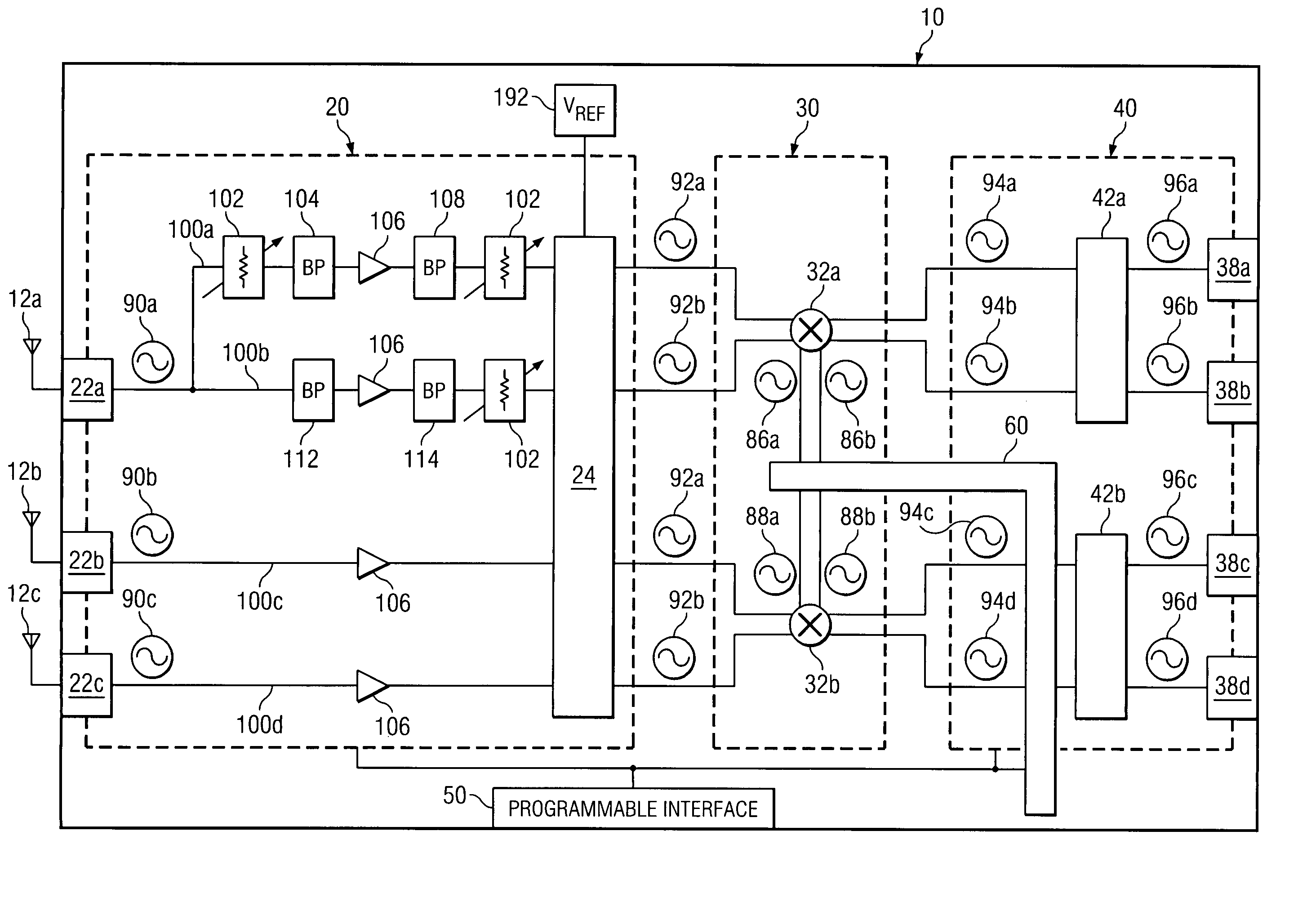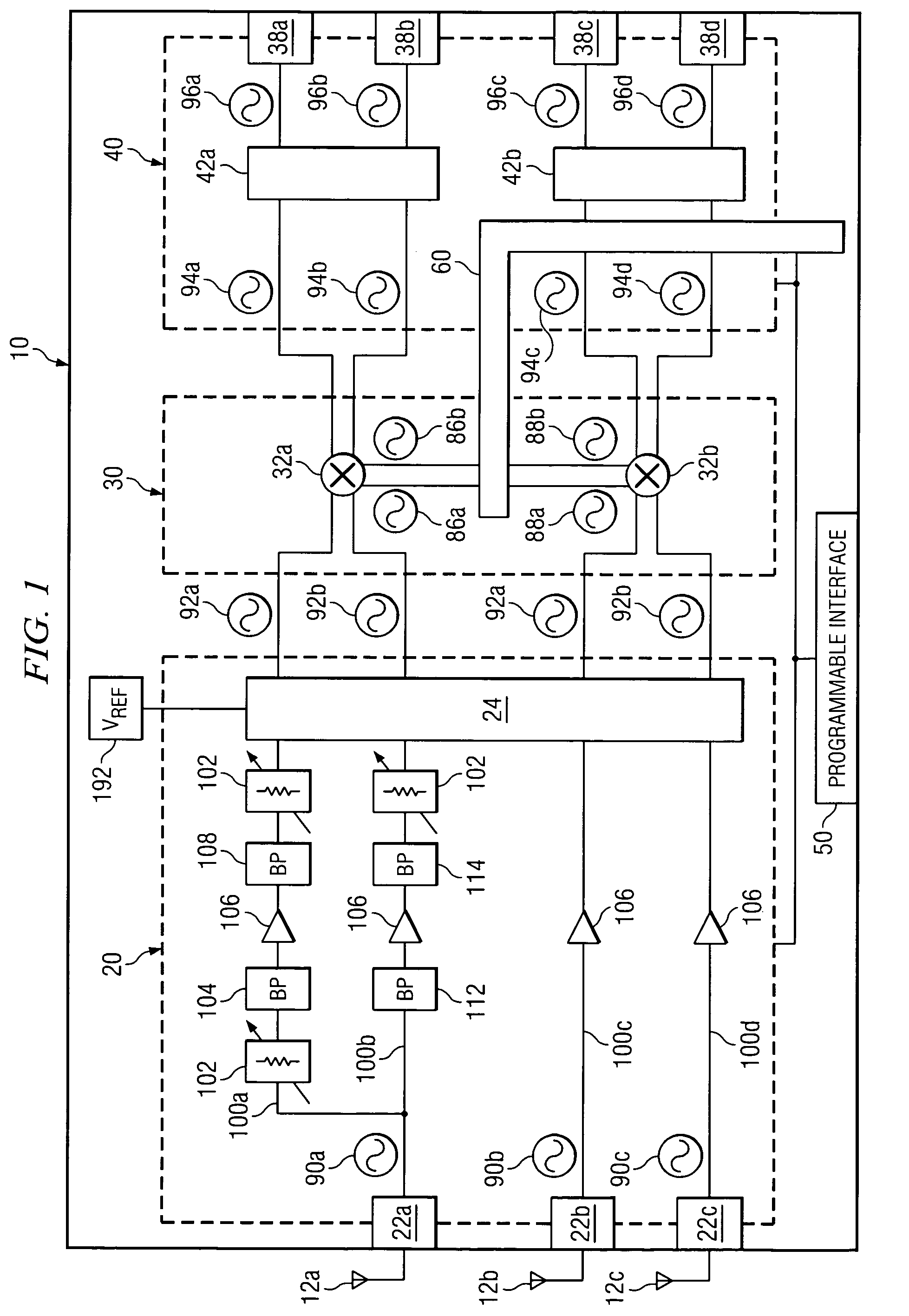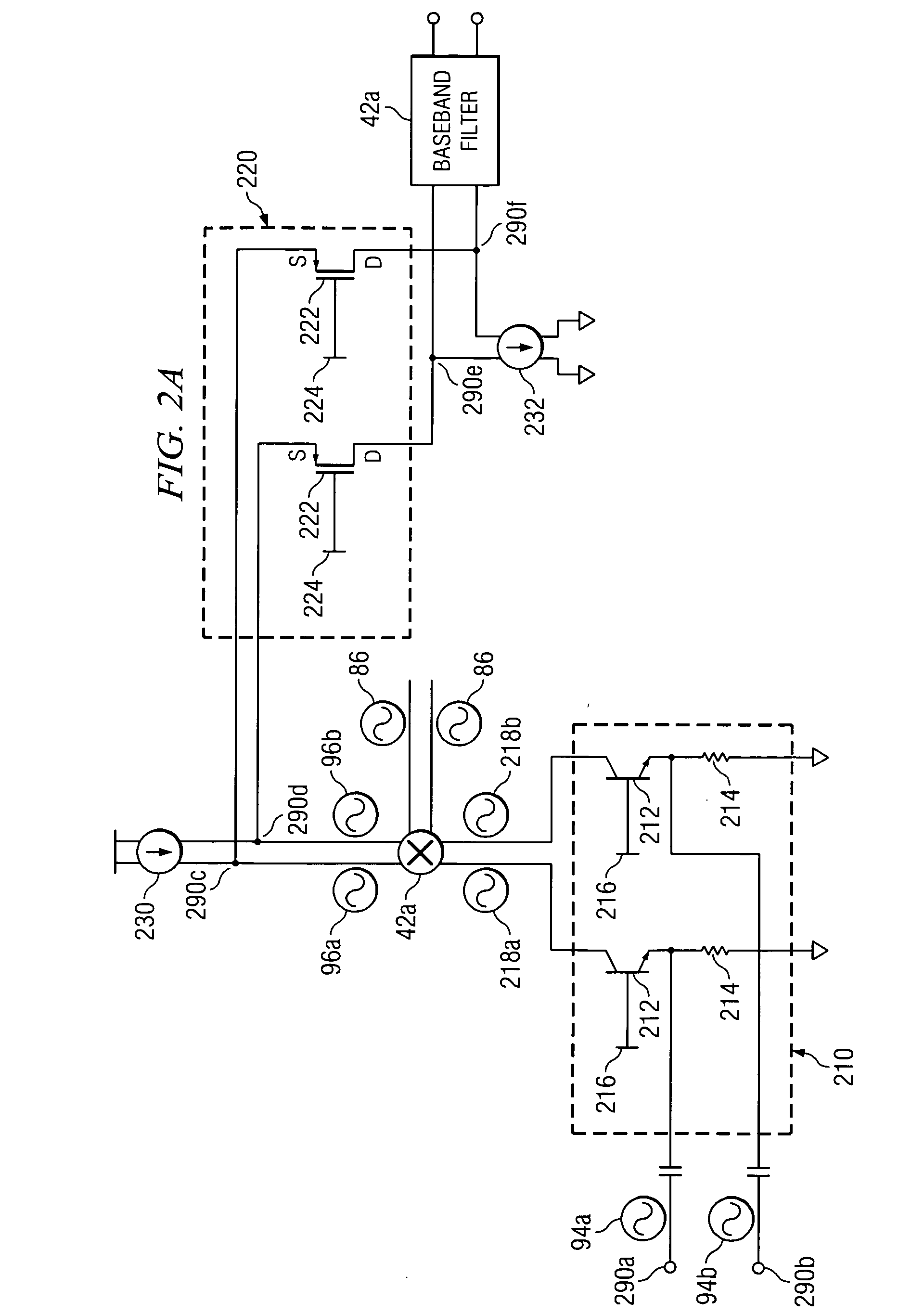Radio-frequency tuner with differential converter
a technology of differential converter and radio frequency tuner, which is applied in diversity/multi-antenna system, polarisation/directional diversity, and resonant circuits using central processing units. it can solve problems such as difficult design, compromise receiver performance, and difficulty in tuning across multiple sub-bands of radio-frequency spectrum, so as to reduce headroom and noise reduction, the effect of greater flexibility
- Summary
- Abstract
- Description
- Claims
- Application Information
AI Technical Summary
Benefits of technology
Problems solved by technology
Method used
Image
Examples
Embodiment Construction
[0014]FIG. 1 is a block diagram illustrating functional components of a particular embodiment of a tuner 10 capable of tuning radio-frequency signals received over multiple sub-bands of the radio-frequency spectrum. As shown in FIG. 1, tuner 10 includes a radio-frequency (RF) stage 20, a mixing stage 30, a baseband stage 40, a programmable interface 50, and a frequency generation circuit 60. Additionally, tuner 10 couples to a plurality of antennas 12 through which tuner 10 receives input signals 90. Tuner 10 isolates and outputs information within a particular range of frequencies, or “channel”, selected by a user or another component coupled to tuner 10. In particular embodiments, tuner 10 is capable of tuning input signals 90 received within different sub-bands of varying size without substantial deterioration in performance. Additionally, in particular embodiments, based on the configuration of the various elements of tuner 10, tuner 10 may be capable of operating with low headr...
PUM
 Login to View More
Login to View More Abstract
Description
Claims
Application Information
 Login to View More
Login to View More - R&D
- Intellectual Property
- Life Sciences
- Materials
- Tech Scout
- Unparalleled Data Quality
- Higher Quality Content
- 60% Fewer Hallucinations
Browse by: Latest US Patents, China's latest patents, Technical Efficacy Thesaurus, Application Domain, Technology Topic, Popular Technical Reports.
© 2025 PatSnap. All rights reserved.Legal|Privacy policy|Modern Slavery Act Transparency Statement|Sitemap|About US| Contact US: help@patsnap.com



